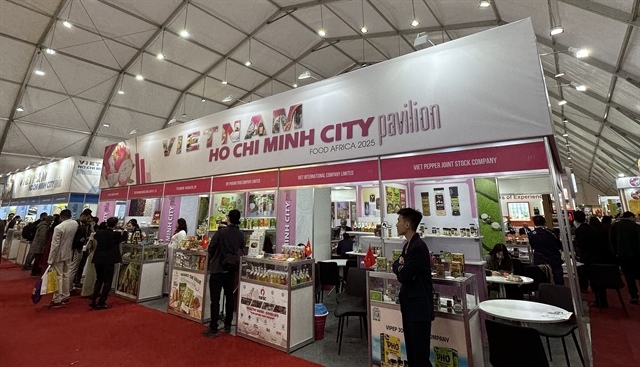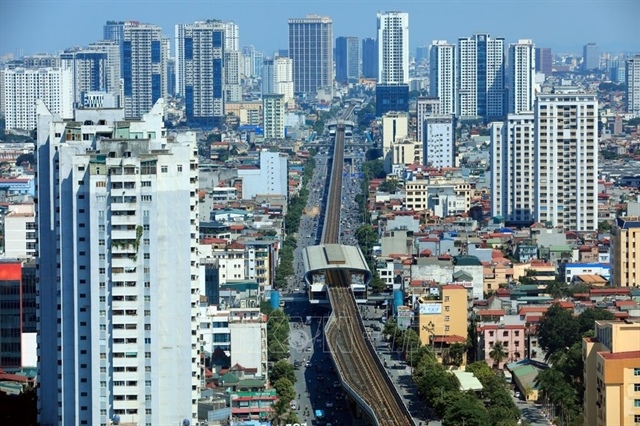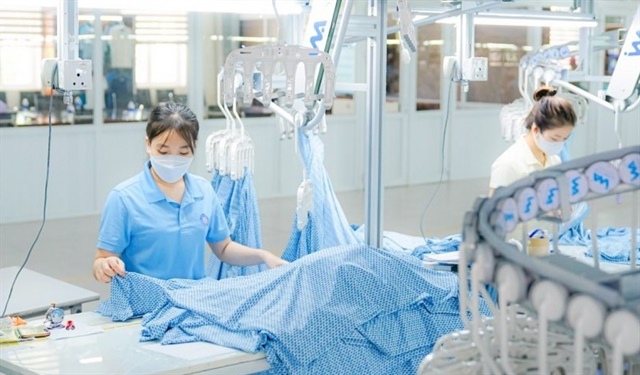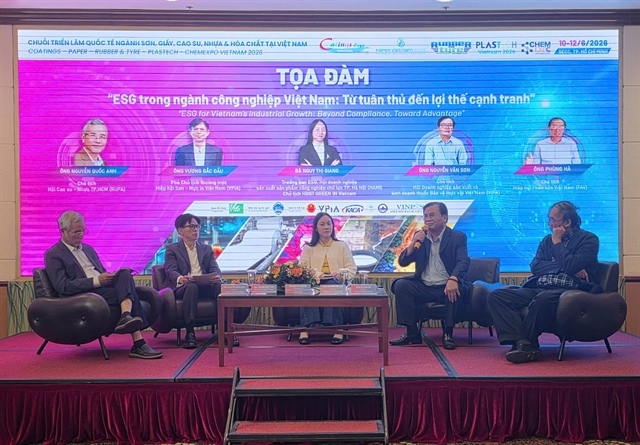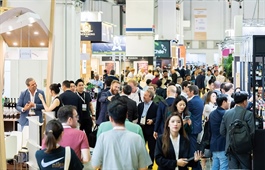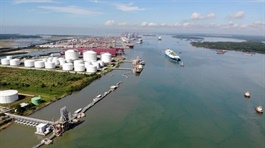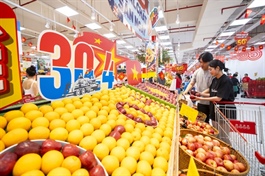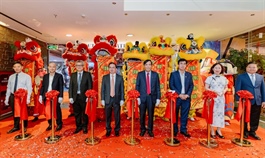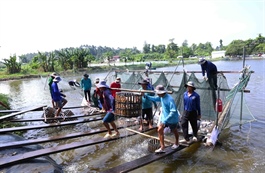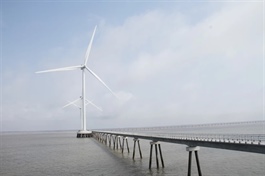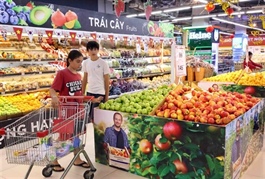Exporters at high risk of fraud gain support
Exporters at high risk of fraud gain support
Fresh policies are being called for so that exporters can diversify their export markets and make supply chains more transparent.
Earlier in April, the Ministry of Industry and Trade (MoIT) requested some industry associations and exporters to advise enterprises to diversify their sources of raw material supply. They are urged to ensure the origin of raw materials, meet food safety requirements, and avoid goods origin fraud.
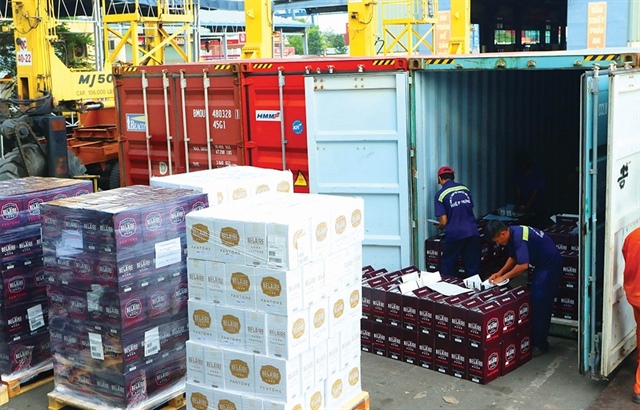
Exporters are being given more support in the battle against fraudPhoto: Le Toan |
“Strict control of input materials is considered a proactive response solution, ensuring the harmony of interests between Vietnam and export markets without disrupting the production and business activities of domestic enterprises,” the MoIT said.
The recommendations aim to support export manufacturing industries that are dependent on some input material markets and are at risk of origin evasion, such as textiles, footwear, and wood products.
At a meeting between the Hanoi Department of Industry and Trade and business associations and export industries in April, Pham Hong Viet, chairman of the Hanoi Leather and Footwear Association, said that businesses must support each other and even suffer some losses to maintain export markets.
“Local businesses in the industry are very transparent about origins, but we see a lot of fraud in foreign-invested enterprises in Vietnam regarding this issue,” he said.
In the textile and garment industry, more than 60 per cent of raw materials is imported from abroad, and the rest from local suppliers, according to the Ho Chi Minh City Garment, Embroidery, and Knitting Association. In recent years, enterprises have also tried to diversify raw material sources to meet the rules of origin.
“The stages from fabric production to finished products must be carried out in Vietnam, or the fabric must be imported from countries attached to our free trade agreements. Goods must meet the origin requirements of destination market,” said association chairman Pham Xuan Hong.
“The MoIT’s directive is necessary now. In addition to diversifying raw material markets, enterprises and the industry need to be careful with fabric of unknown origin being smuggled into Vietnam through unofficial means,” he added. “We consider the fight against origin evasion to no longer be an industry issue but a national issue. All of us will be careful about this.”
Despite the desire to diversify raw material sources, some businesses struggle to do so. For example, the prices of some raw materials from Turkey are often up to 50 per cent higher than those purchased from other markets. Moreover, there is little interest in investment in textile and garment accessories as it is a labour-intensive industry that pollutes the environment, and so there are no incentive policies.
Businesses have increased their purchases of fabric from Turkey, India, and South Korea, Hong said. “The strategy of diversifying supply sources of businesses needs to be recognised and supported by the government through incentives, so that exporter and manufacturers can ensure domestic inputs,” he said.
Phung Quoc Man, chairman of the Ho Chi Minh City Handicraft and Wood Processing Association, admitted that product origin has been a concern of many enterprises for many years.
“Our members are not concerned about origin or evasion issues because imported raw materials strictly comply with the origin requirements of the markets. However, the risk is always lurking because some product codes are caught up in anti-dumping lawsuits,” he said. “Localities need to say no to foreign investors that apply for export production licences, but in fact only perform simple final stages in Vietnam. That is an act of origin evasion that needs to be severely punished.”
As luring foreign investors in producing raw materials is necessary because of gaining access to high technology and strong finance, Man called for more tech transfer. “When raw materials are supplied domestically, exporters will be more confident to do business, with no more lawsuits on origin evasion.”
Ngo Chung Khanh, deputy director general of MoIT’s Multilateral Trade Policy Department, said that Vietnam is struggling with origins and transparency of supply chains. “In addition to diversifying material supply, exporters should follow free trade agreements to seek new markets with more space. For example, agricultural products, seafood, textiles, and garments can be exported to the UK, UK, and North America with larger quantity than the tiny market shares currently,” Khanh said.
However, Viet from the Hanoi Leather and Footwear Association said that businesses are already aware of diversifying markets and reducing export dependence on the United States.
“The leather and footwear industry currently has some market share in Asia, the Middle East, and Africa. We have also tried to enter the EU but have to be very patient,” Viet said. “My company had absolutely no orders from the EU last year. It has very high requirements for product quality, but the number of products ordered is low. Meanwhile, the US imports a large number of goods, has a population of 350 million people, and spends more on average than EU citizens. That is why we need direction and support from the government.”
|
Pham Tan Cong, chairman, Vietnam Chamber of Commerce and Industry The government has taken swift and multidimensional action to support the business community and protect Vietnam’s trade interests. Immediately following the announcement of the US executive order, we issued formal letters to relevant US authorities, expressing our concerns and urging reconsideration. At the same time, we initiated a coordinated effort with the American Chamber of Commerce in Vietnam to build a joint coalition, amplifying our voice in advocacy efforts. The reaction was encouraging – within just three hours, it acknowledged our letter and expressed alignment with our concerns, reaffirming that constructive dialogue remains possible and effective. Beyond business-level coordination, the VCCI has also worked closely with the Vietnamese government to ensure a strong and timely diplomatic response. The direct call between Party General Secretary To Lam and the US leadership, followed by a special envoy delegation led by Deputy Prime Minister Ho Duc Phoc to Washington, shows Vietnam’s commitment to dialogue and willingness to resolve trade tensions through high-level engagement. In parallel, the VCCI has been gathering input from affected industries, preparing policy briefs, and proposing recommendations to help mitigate the impact and prepare businesses for possible long-term shifts in trade dynamics. When it comes to long-term strategies that Vietnam should adopt to mitigate risks, we need to reposition Vietnam in the global supply chain and reduce dependency on any single market. Firstly, strategic dialogue with the US must be deepened to balance trade and build trust. Secondly, diversifying export markets by leveraging free trade agreements is essential. Thirdly, supply chain restructuring is critical – we need to localise more, develop core industries, and improve our rules-of-origin compliance. Beyond that, joining the US-led supply chains in key sectors can elevate Vietnam’s role as a reliable alternative to China. And all this requires better infrastructure, institutional reforms, and a more skilled workforce. Mac Quoc Anh, vice chairman Hanoi Association of Small and Medium Enterprises We suggest relevant authorities strengthen dialogue through many channels, as well as quickly implement specific solutions. I believe that we still have opportunities in the US market. Multinational corporations cannot set up factories in the US because labour costs and other production costs there are too high, pushing the selling price of products up 2-3 times the current prices. However, enterprises must enhance quality, skills, unique competitiveness and advantages that cannot be replaced. Exporters need to recalculate the cost and profit equation, increasing risk provisions from 3 to 7 or even 10 per cent. In addition to diversifying the export market, they should diversify product distribution channels, such as direct retail, and e-commerce to cut intermediary costs. Tran Anh Tuan, deputy director Hanoi Industrial and Export Processing Zones Authority There are 850 enterprises in our zone, with around 190,000 employees. Quite a few of those export all their products to the US market, and are facing the risk of shutting down or shifting production, if a high import tariff rate is imposed. Most of the survey’s respondents reported an impact level of 30-70 per cent, depending on the final outcome. I propose some long-term solutions. Besides product origin and diversifying export markets, businesses must improve their legal capacity and trade defence. On the part of state management agencies, I recommend boosting administrative procedure reform, and simplifying import-export processes, customs, and various certificates. Businesses also need some financial and credit support, low interest rates, and debt extension. |
- 11:00 03/05/2025



